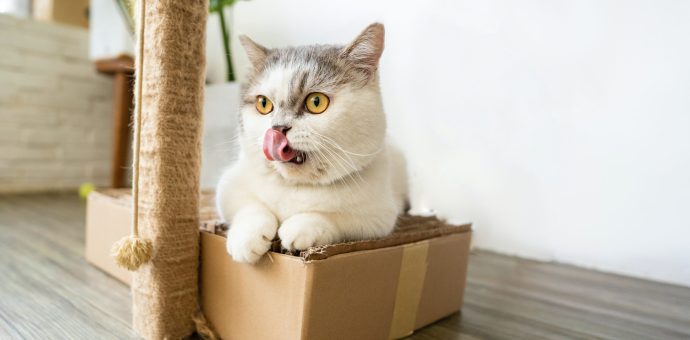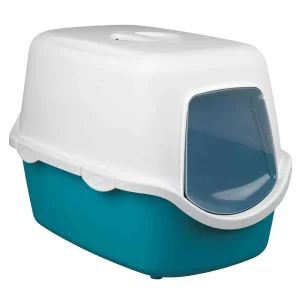Kitten litter box training is an essential part of pet ownership. This not only keeps the surroundings clean and odor-free, but it also keeps your Kitten safe and healthy.
As Team PetsPaa, we understand how difficult the process can be, especially for first-time Kitten owners. Yet, if you apply the right techniques and have patience, litter training may be a relatively simple process.
We have designed this comprehensive step-by-step guide to assist you through the steps of litter training your Kitten, and also offer tips to make the process as effortless as possible.
Table of Contents



Understanding Kitten's Behavior
Before you start kitten litter box training, you should first understand your pet’s behavior. Felines are normally clean animals, and they prefer to pass themselves in a litter box. If the litter box is dirty or inconvenient, your Kitten may choose to eliminate it elsewhere in your home.
Choose the Right Litter Box
The effectiveness of litter training depends on choosing the right litter. Your kitten’s success in learning to use the litter box may considerably depend on the litter which you select. The box must be big enough for your kitten to move around safely and with ease.
Some kittens prefer covered litter boxes, while others like uncovered boxes. Some kittens prefer fine-grained unscented litter, while others like scented litter, and yet others prefer litter made from recyclable materials.
We recommend starting with a shallow, high-quality, odorless compact litter box. Avoid using scented litter boxes or litter-containing deodorizers because they could cause irritation to your kitten’s sensitive nose. Try various types of litter boxes to find out which one your Kitten prefers.

Choose the Right Location
The location of the litter box is also an important factor in cat ownership. Selection of the right location for kitten litter box is crucial. Kittens prefer their litter box in a quiet, private area of a home.
Place the litter box in a location that is easily accessible to your Kitten, but is also out of the way of high-traffic areas. Avoid placing the litter box near their food and water bowls, as Kittens prefer to keep these areas separate.
Introduce Your Kitten to the Litter Box
Introduce your kitten to the litter box. Show your kitten where the litter box is located, and place them in the litter box several times throughout the day viz. after meal, playtime, or naps and let them explore it on their own. Encourage them to sniff around and explore.
Clean the Litter Box Regularly
Cleaning the litter box regularly is essential for your kitten’s health and wellness. We suggest scooping out waste material at least once a day and completely changing the litter every week. Kittens are clean pet animals, which prefer a clean litter box. Make sure the use of disinfectant and cleaner to sanitize the box.

Reward Your Kitten
Reward your kitten for using the litter box by providing them treats or praise. If they don’t, comfortably place them back in the box after they have eaten the food or woken up from sleep. Positive reinforcement technique is key to the success of litter training your kitten.
Consistency and Patience are key
Litter training a Kitten can take time, and it’s important to be patient and persistent. If your Kitten has accidents outside of the litter box, do not scold or punish them. Instead, calmly clean up the mess and continue with the litter training process.
Consistency is the key when it comes to kitten litter box training. Stick to a regular feeding and litter box cleaning schedule to help your kitten establish a routine. This will make it easier for your kitten to know when it’s time to use the litter box.
Provide Multiple Litter Boxes
If you have more than one kitten, make sure each one has its own litter box. Kittens are territorial creatures and aggressive in nature, and they may oppose sharing a litter box with another kitten.
Consider Using Attractants
Consider implementing a litter attractant if your kitten is experiencing trouble while using the litter box. These items include pheromones, which can assist your kitty to locate the litter box.

Consult With Your Veterinarian
Consult with your veterinarian, if your kitten is still experiencing trouble while using the litter box or if you have any doubts about your kitten’s behavior. They can give you more guidance and advice on how to successfully litter train your kitten which would be a great help for you.
Bonus Tip
Addressing Accidents
Accidents sometimes happen, particularly when trying to teach a kitten to use the litter box. Clean the area carefully with an enzymatic cleanser to get rid of any odor if your cat has an accident outside of the litter box. Be caution when using ammonia-based cleansers as they might attract your cat back to the same spot.
Conclusion
To summarise, litter training a kitten may appear to be a challenging task, but with patience, consistency, and the right techniques, it can be a smooth and straightforward procedure. Understanding your Kitten’s behavior, choosing the right litter box, offering a clean and comfortable litter box, using positive reinforcement, and addressing any possible concerns will help your kitten learn to use the litter box on their own. Consult with your veterinarian if you have any concerns or questions regarding litter training.
By following these steps, you will be able to effectively litter box train your kitten and enjoy a clean and odor-free home in no time. You may effectively litter train your Kitten and have a clean and happy household if you follow these advice and strategies.
"Be Petspaa, Do PetsPaa"
Read More...
- Basics of Cat Grooming: Essential Tips for a Happy Feline
- 5 Easy Steps to Perfect Dog Grooming at Home
- The Perfect Start: An Introduction to Cat Training for Owners
- Labrador Retrievers Exclusive: The Ultimate Resource for Dog Lovers
- Solve Your Dog Barking Problem: 10 Effective ways for a Peaceful Home






